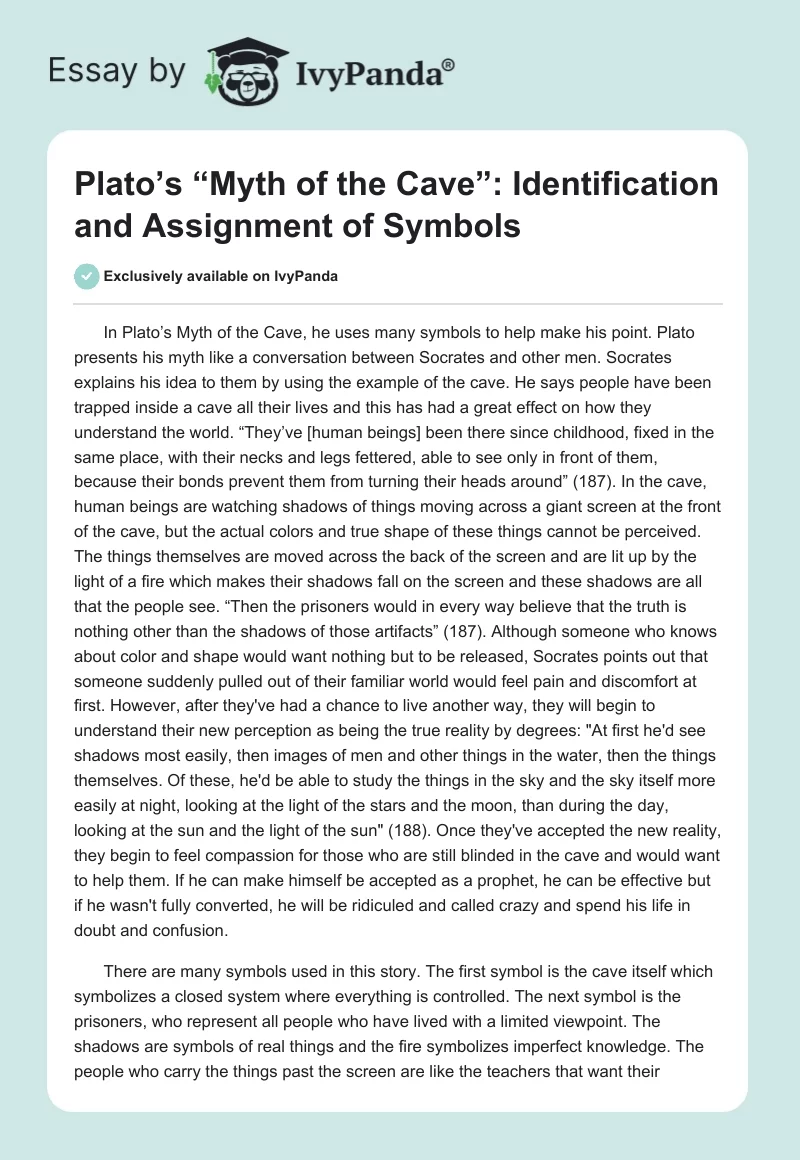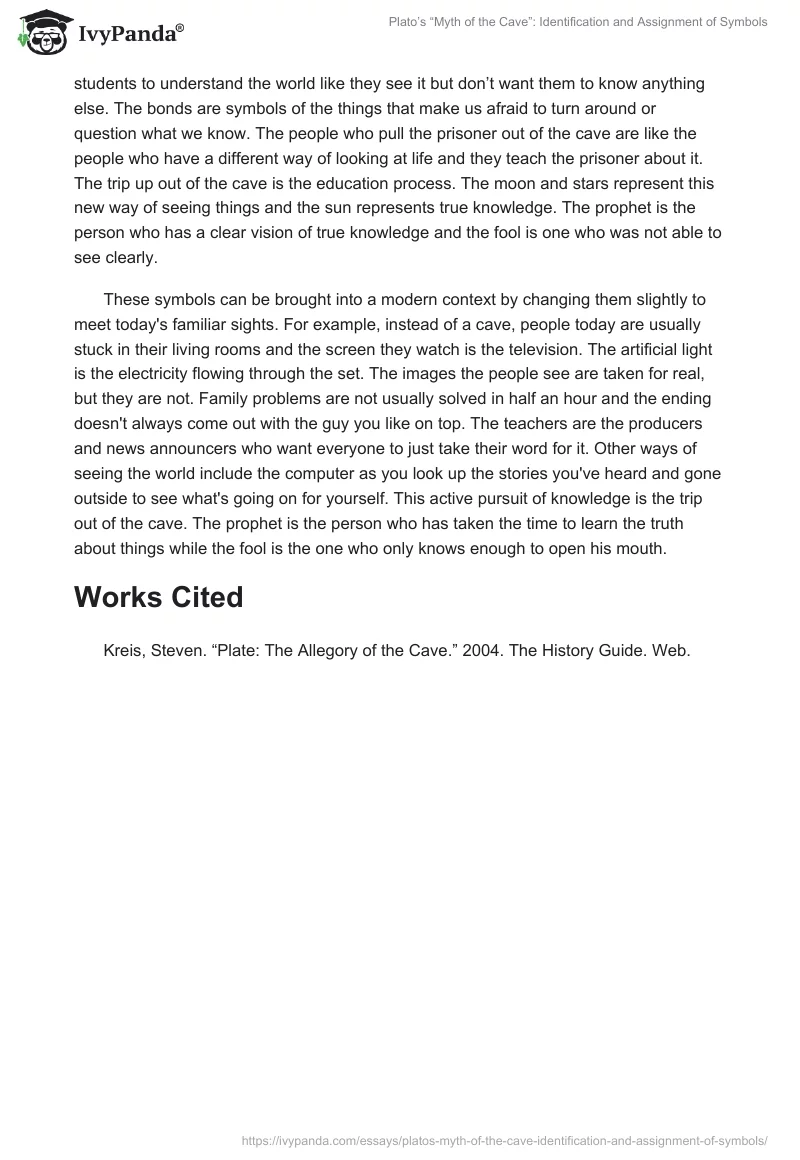In Plato’s Myth of the Cave, he uses many symbols to help make his point. Plato presents his myth like a conversation between Socrates and other men. Socrates explains his idea to them by using the example of the cave. He says people have been trapped inside a cave all their lives and this has had a great effect on how they understand the world. “They’ve [human beings] been there since childhood, fixed in the same place, with their necks and legs fettered, able to see only in front of them, because their bonds prevent them from turning their heads around” (187). In the cave, human beings are watching shadows of things moving across a giant screen at the front of the cave, but the actual colors and true shape of these things cannot be perceived. The things themselves are moved across the back of the screen and are lit up by the light of a fire which makes their shadows fall on the screen and these shadows are all that the people see. “Then the prisoners would in every way believe that the truth is nothing other than the shadows of those artifacts” (187). Although someone who knows about color and shape would want nothing but to be released, Socrates points out that someone suddenly pulled out of their familiar world would feel pain and discomfort at first. However, after they’ve had a chance to live another way, they will begin to understand their new perception as being the true reality by degrees: “At first he’d see shadows most easily, then images of men and other things in the water, then the things themselves. Of these, he’d be able to study the things in the sky and the sky itself more easily at night, looking at the light of the stars and the moon, than during the day, looking at the sun and the light of the sun” (188). Once they’ve accepted the new reality, they begin to feel compassion for those who are still blinded in the cave and would want to help them. If he can make himself be accepted as a prophet, he can be effective but if he wasn’t fully converted, he will be ridiculed and called crazy and spend his life in doubt and confusion.
There are many symbols used in this story. The first symbol is the cave itself which symbolizes a closed system where everything is controlled. The next symbol is the prisoners, who represent all people who have lived with a limited viewpoint. The shadows are symbols of real things and the fire symbolizes imperfect knowledge. The people who carry the things past the screen are like the teachers that want their students to understand the world like they see it but don’t want them to know anything else. The bonds are symbols of the things that make us afraid to turn around or question what we know. The people who pull the prisoner out of the cave are like the people who have a different way of looking at life and they teach the prisoner about it. The trip up out of the cave is the education process. The moon and stars represent this new way of seeing things and the sun represents true knowledge. The prophet is the person who has a clear vision of true knowledge and the fool is one who was not able to see clearly.
These symbols can be brought into a modern context by changing them slightly to meet today’s familiar sights. For example, instead of a cave, people today are usually stuck in their living rooms and the screen they watch is the television. The artificial light is the electricity flowing through the set. The images the people see are taken for real, but they are not. Family problems are not usually solved in half an hour and the ending doesn’t always come out with the guy you like on top. The teachers are the producers and news announcers who want everyone to just take their word for it. Other ways of seeing the world include the computer as you look up the stories you’ve heard and gone outside to see what’s going on for yourself. This active pursuit of knowledge is the trip out of the cave. The prophet is the person who has taken the time to learn the truth about things while the fool is the one who only knows enough to open his mouth.
Works Cited
Kreis, Steven. “Plate: The Allegory of the Cave.” 2004. The History Guide. Web.


